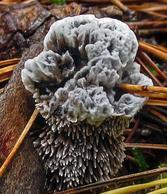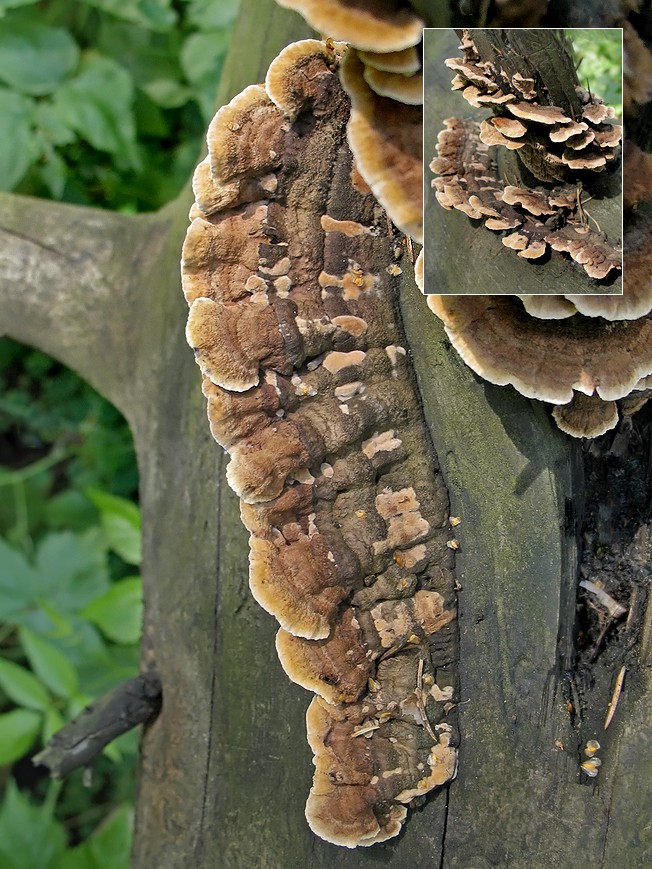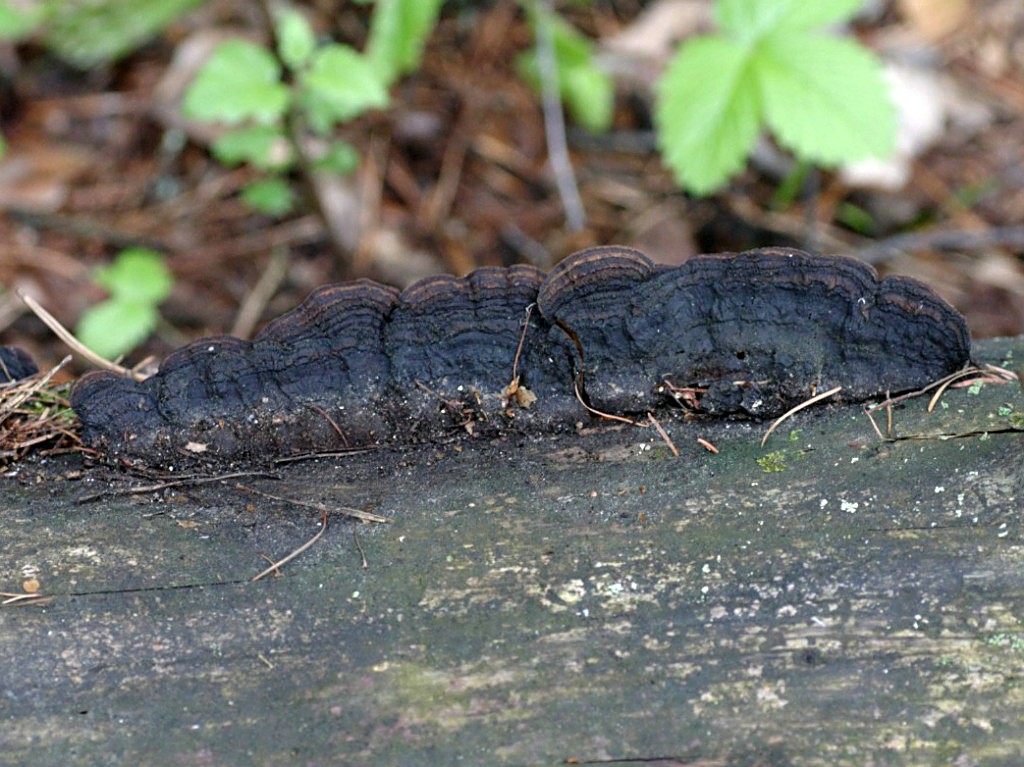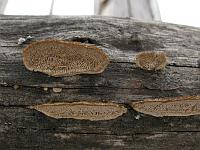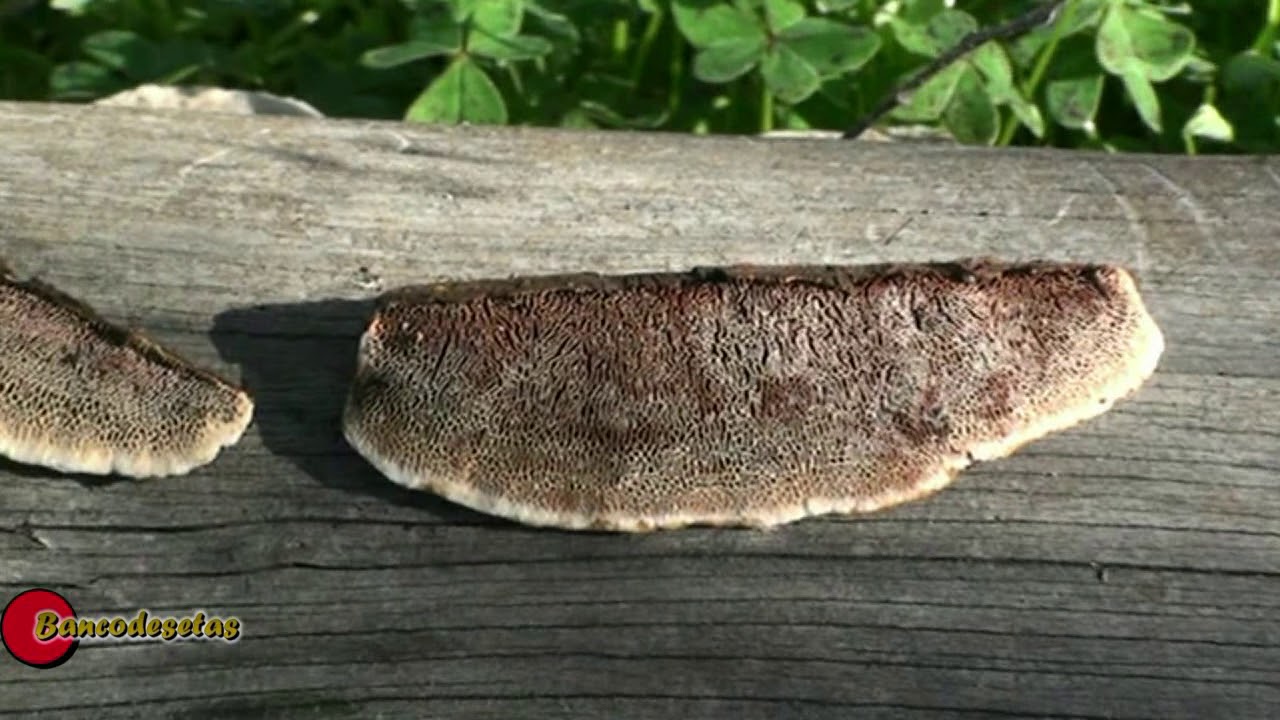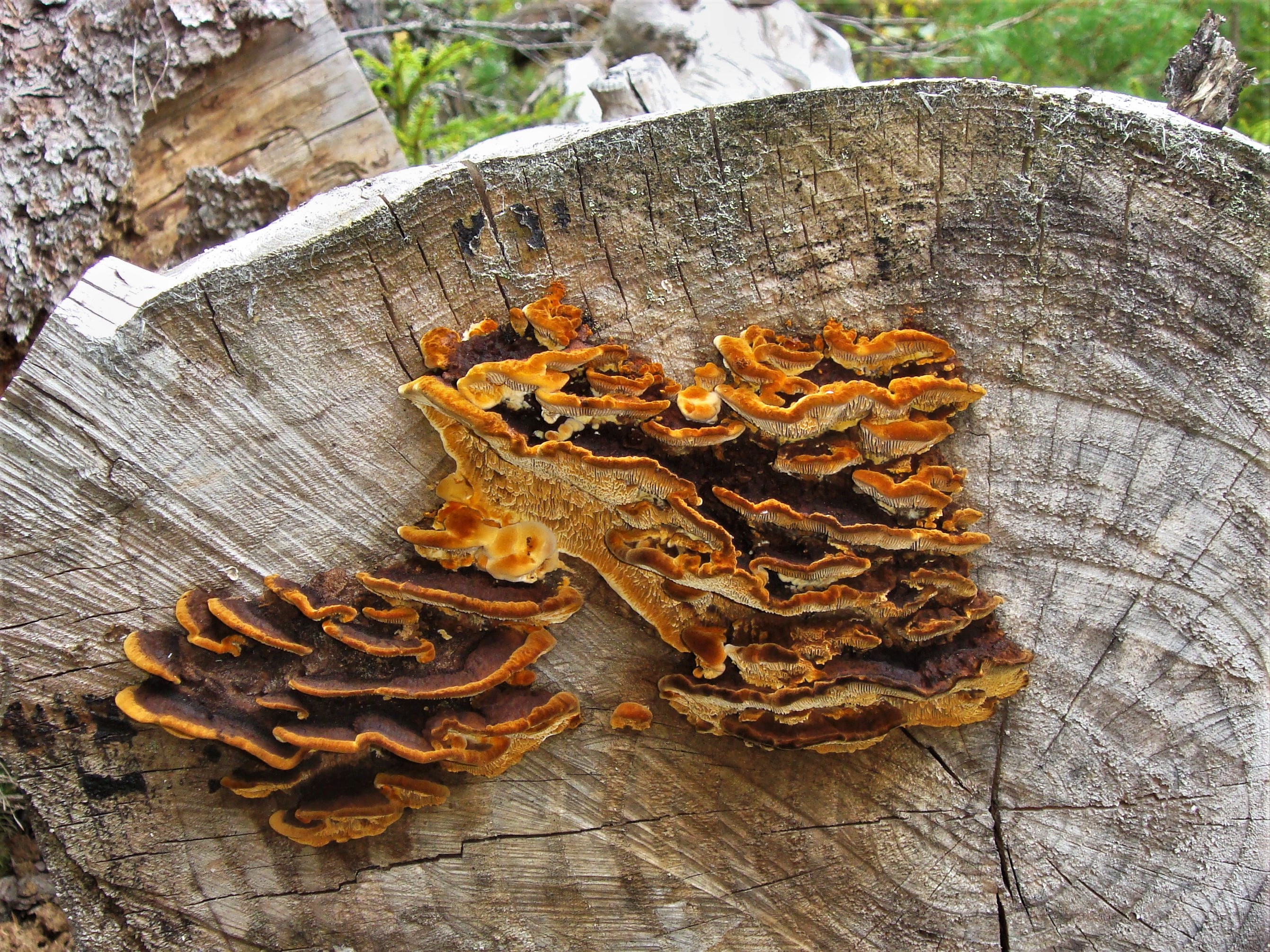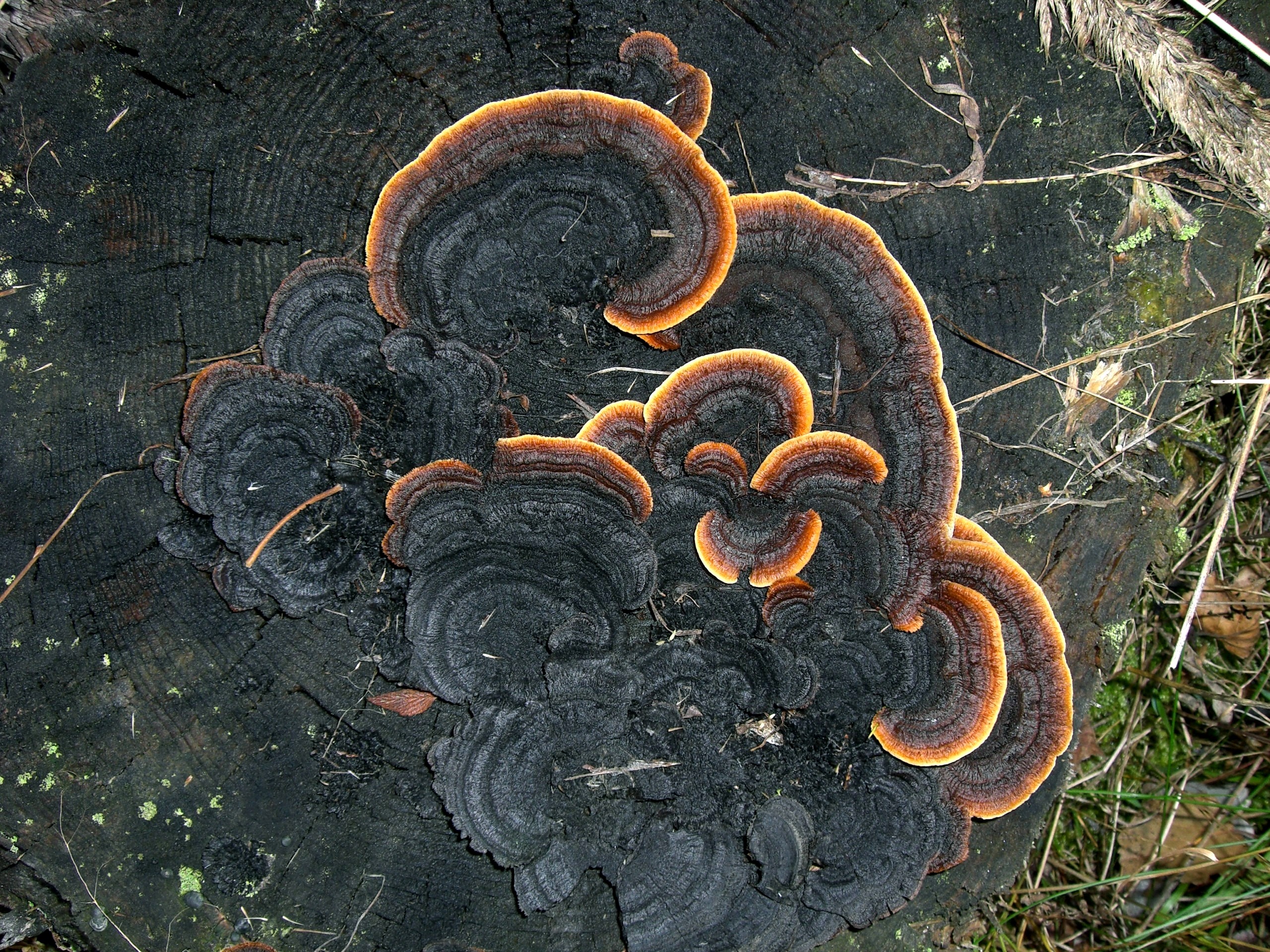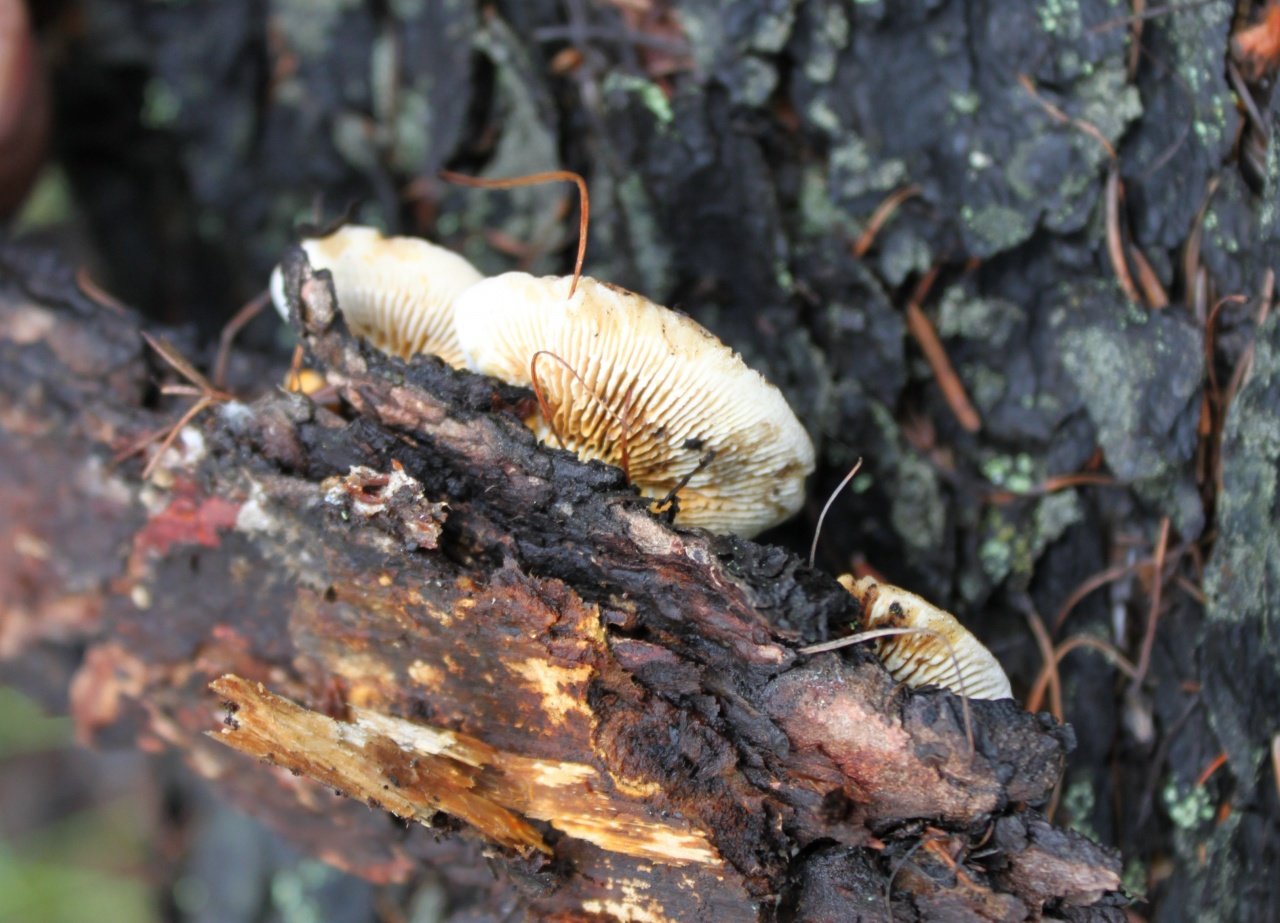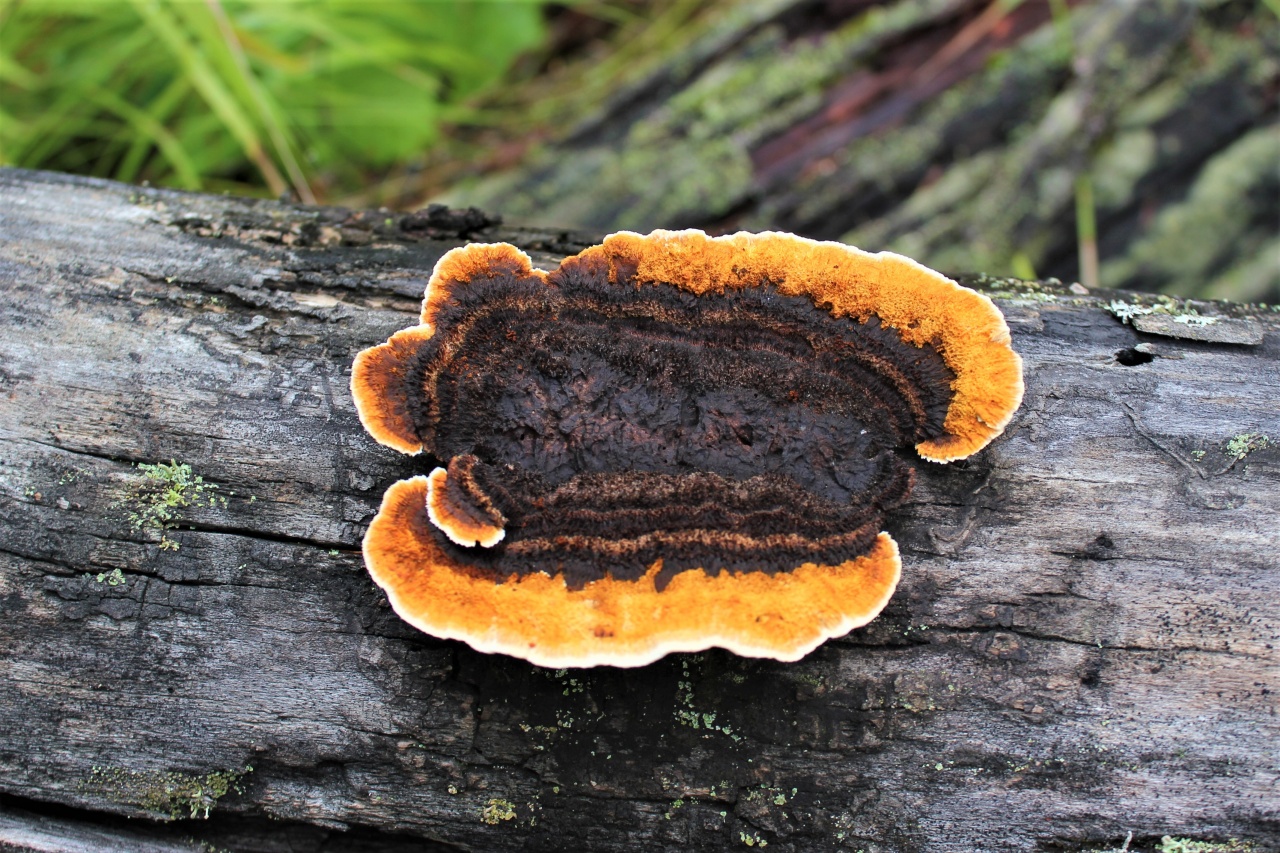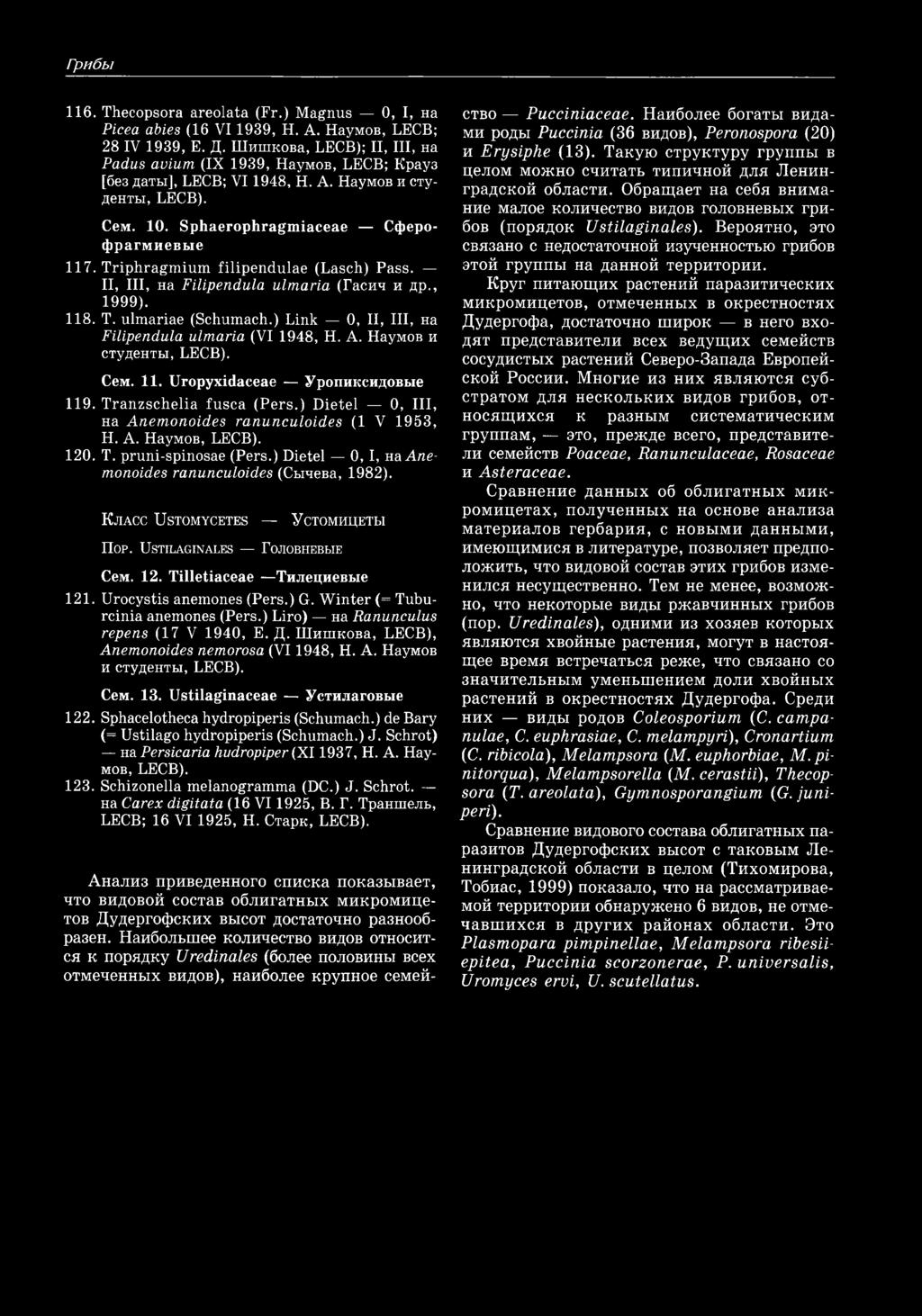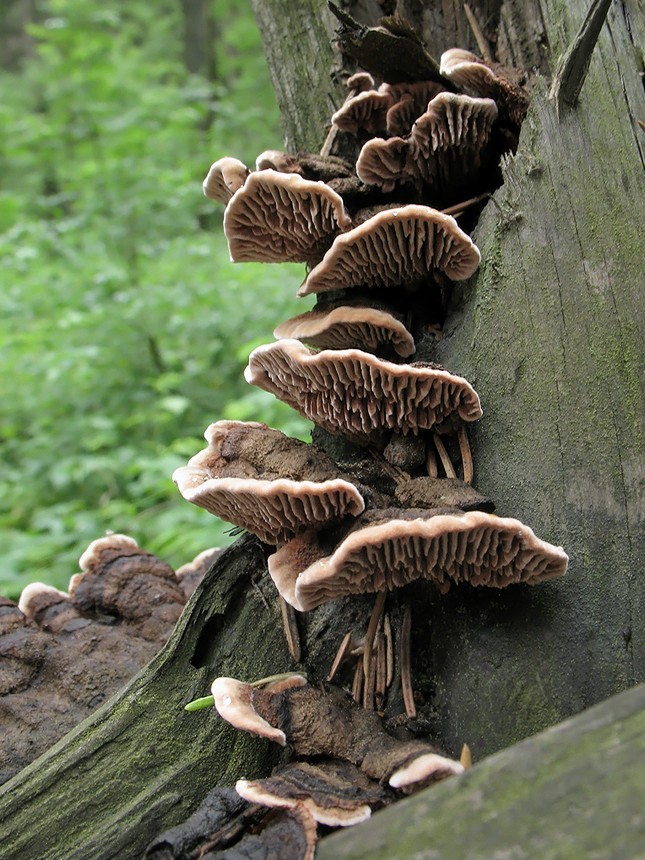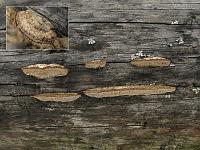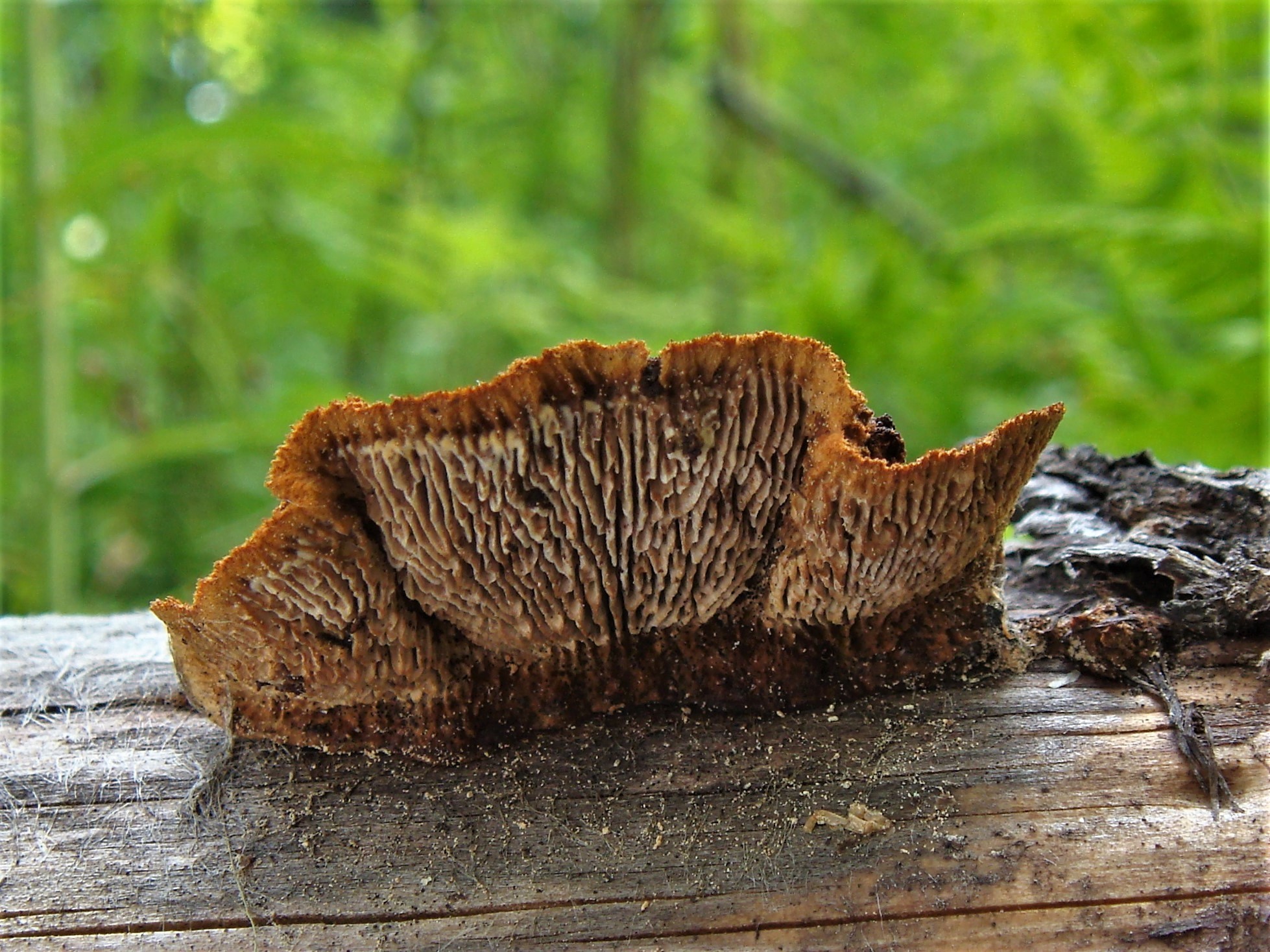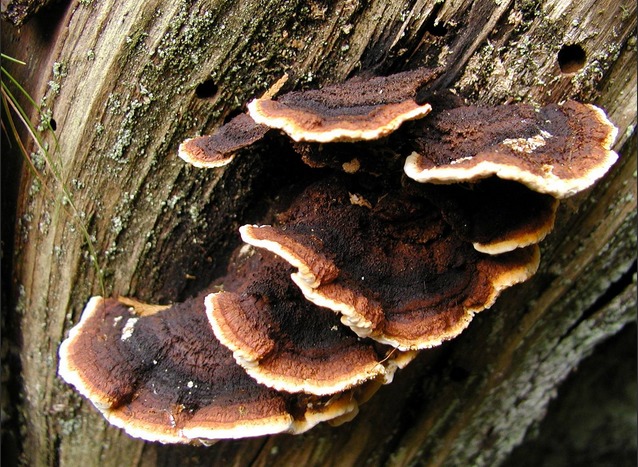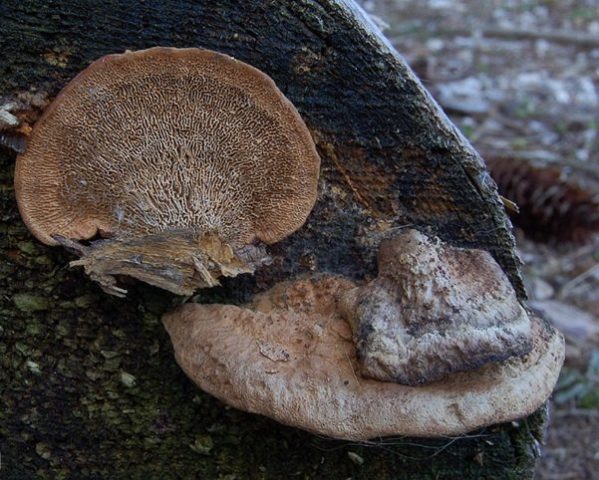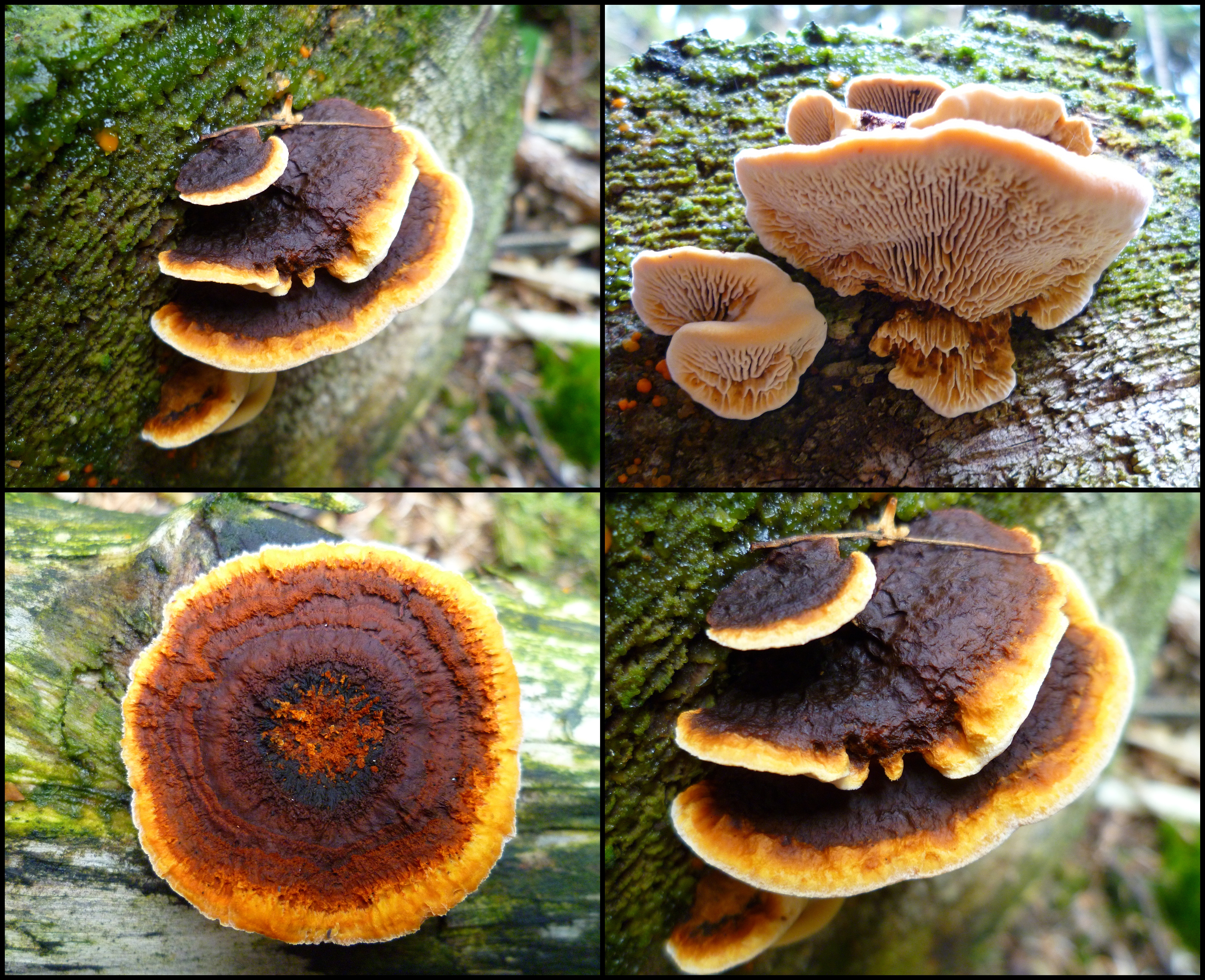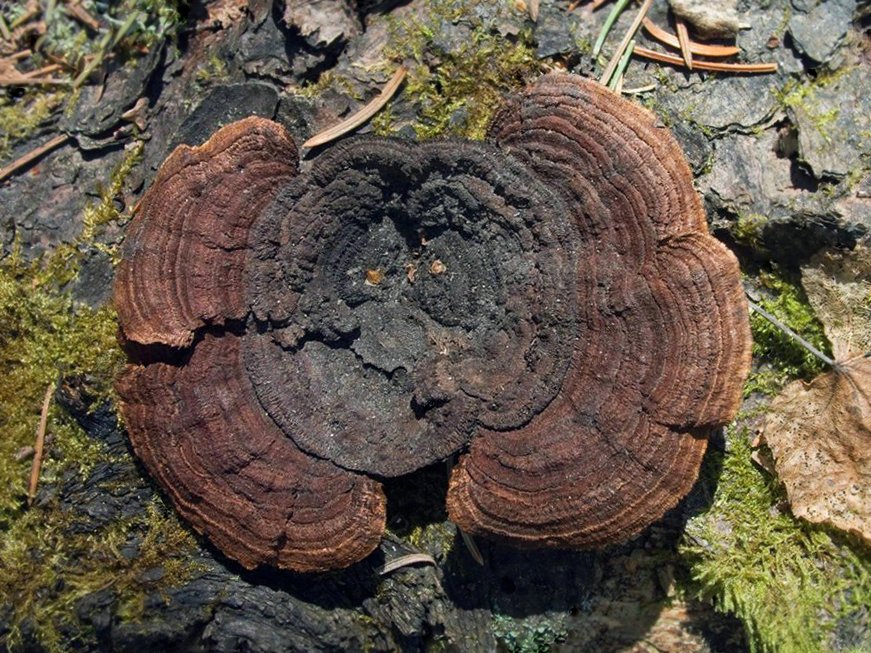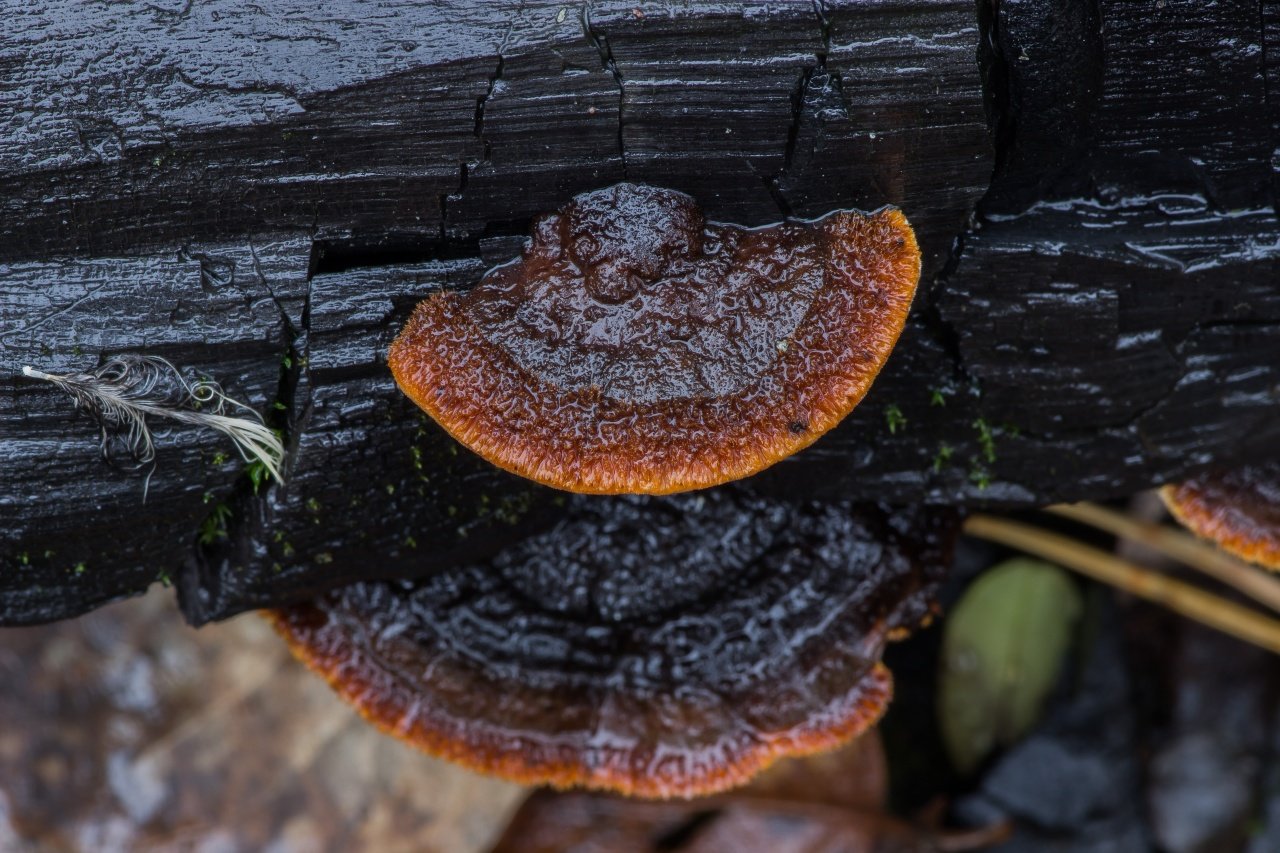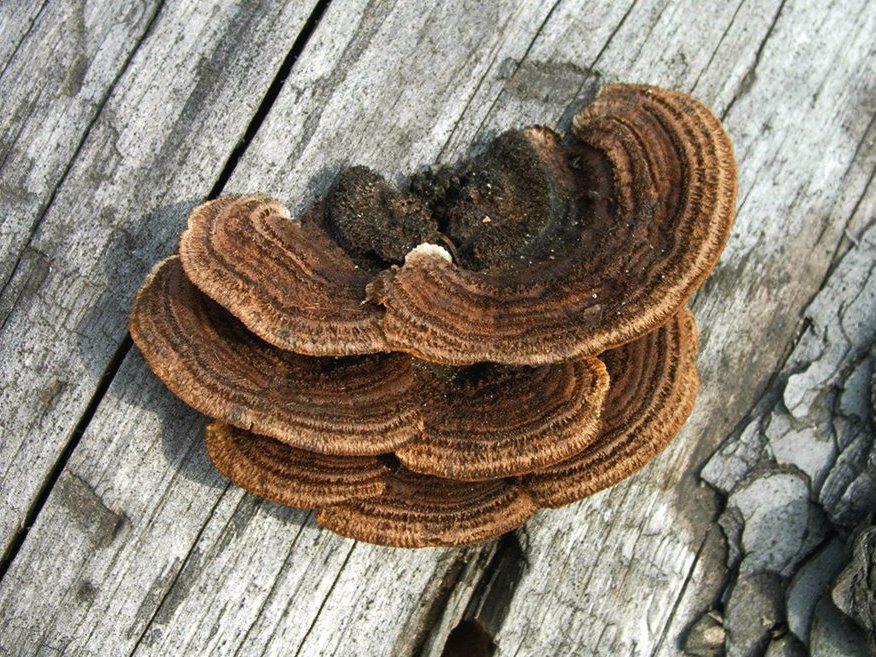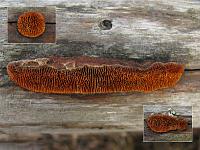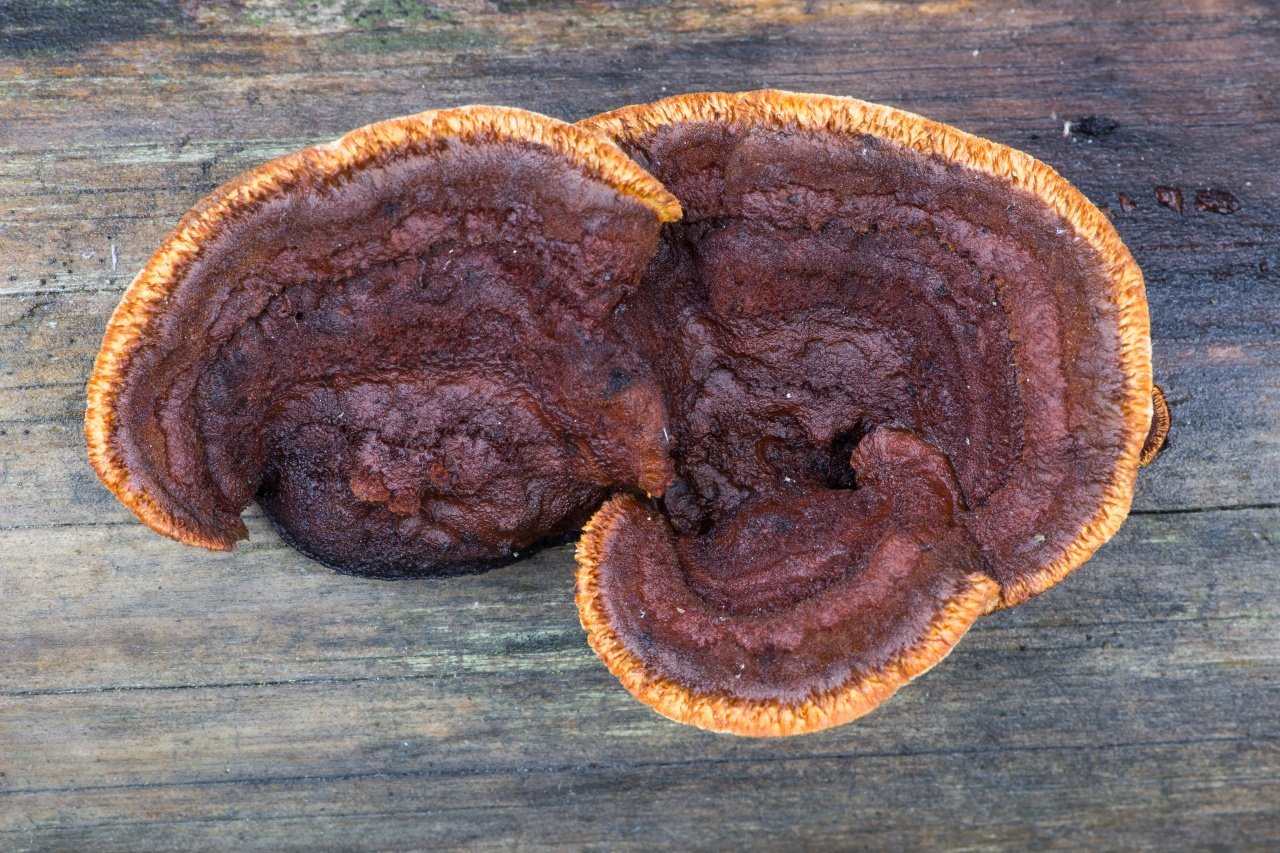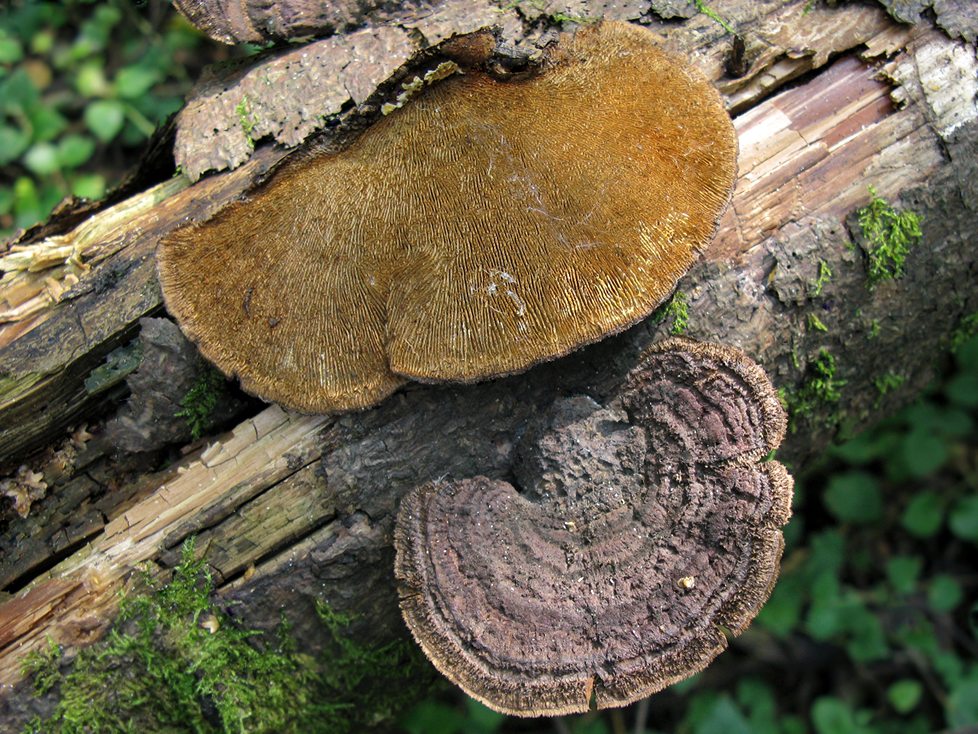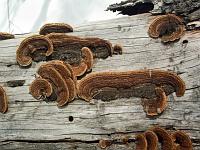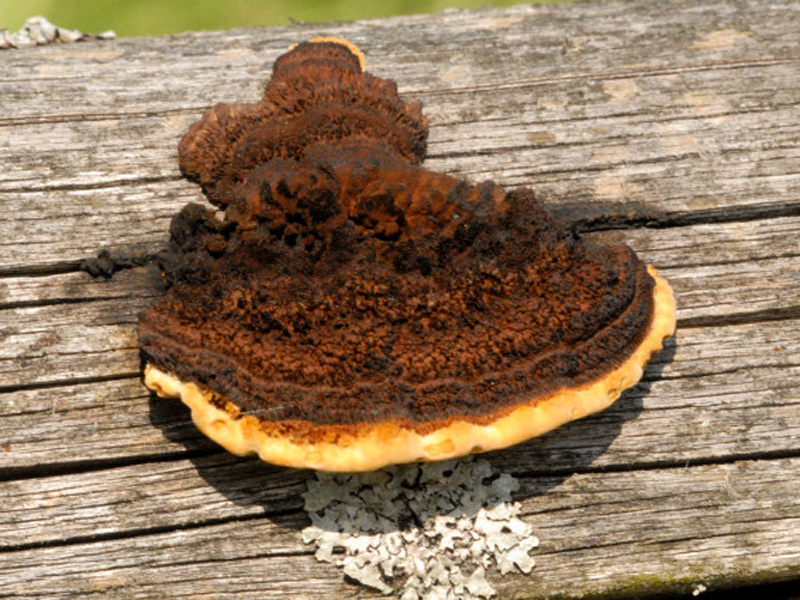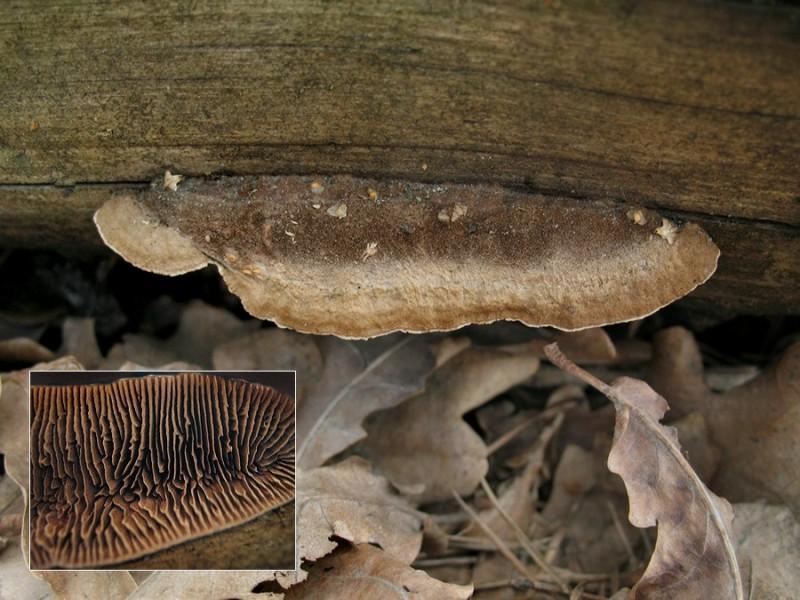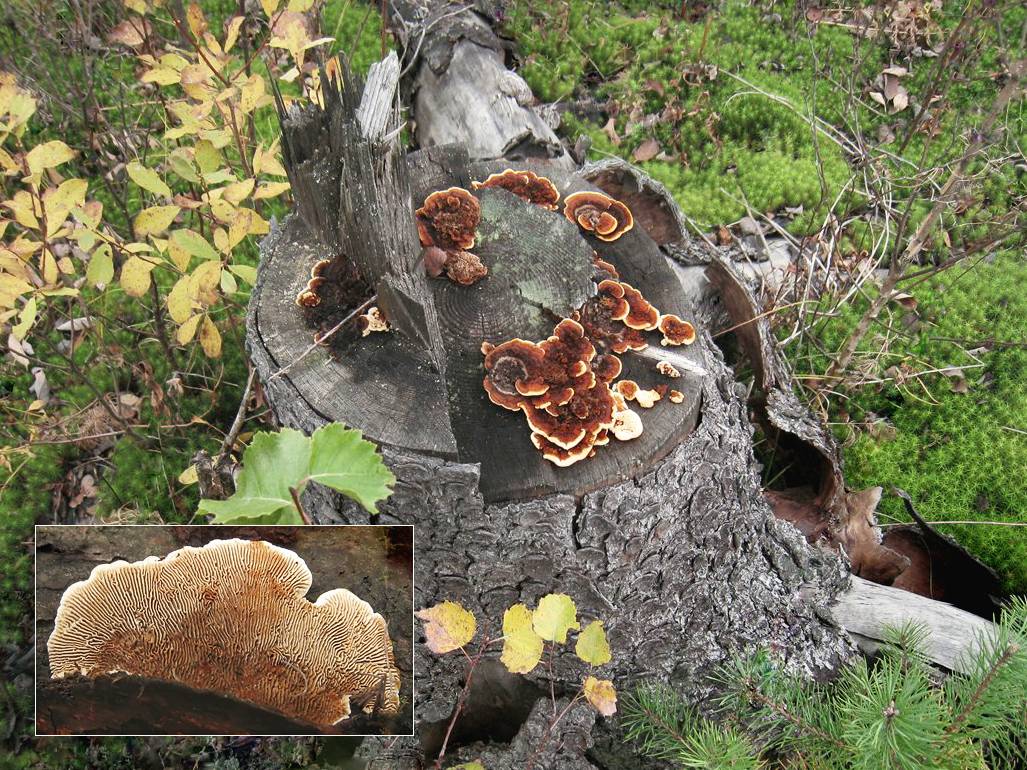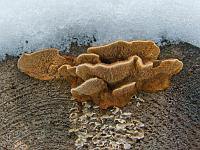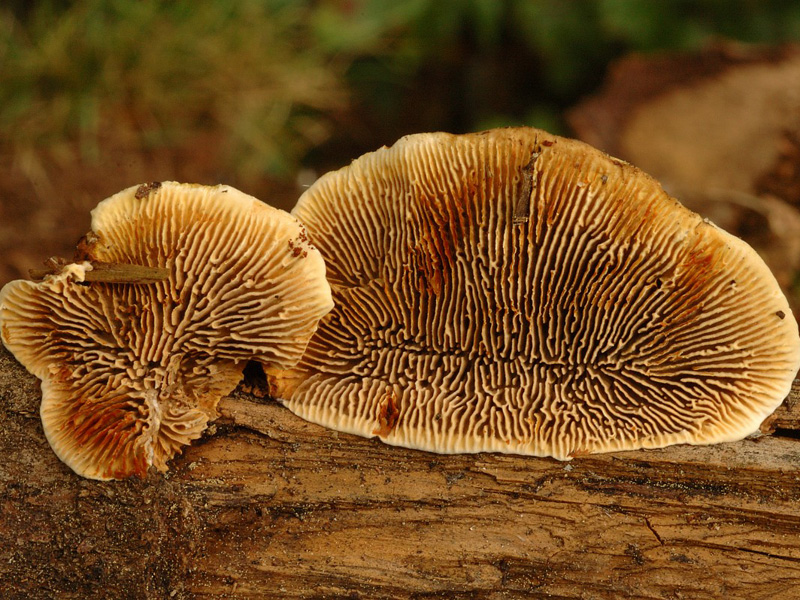Taxonomy [| code]
Gleophyllum was first described by Franz Xaver von Wulfen in a combined genus of lamellar mushrooms in 1786. Since 1802, it was most often described as part of a narrower combined genus of mushrooms with a labyrinthine hymenophore. In 1882, the Finnish mycologist Peter Adolf Karsten singled it out into a separate genus Gleophyllum.
Synonyms | code
- Agaricus boletiformis Sowerby, 1809
- Agaricus sepiarius Wulfen, 1786basionym
- Agaricus undulatus Hoffm., 1797, nom. illeg.
- Daedalea sepiaria (Wulfen) G. Gaertn., B. Mey. & Scherb., 1802
- Daedalea sepiaria var. undulata Hoffm. ex Pers., 1828
- Daedalea ungulata Lloyd, 1915
- Gloeophyllum ungulatum (Lloyd) Imazeki, 1943
- Lenzites argentinus Speg., 1898
- Lenzites sepiarius (Wulfen) Fr., 1838
- Lenzites undulatus (Hoffm. Ex Pers.) Sacc. & Traverso, 1912
- Merulius sepiarius (Wulfen) Schrank, 1789
Biological description [| code]
Fruiting bodies are annual to 3-4 years old, rosette, half, fan-shaped or irregular, occasionally widespread, growing together laterally, often tiled along the substrate. The upper surface is covered with bristly pubescence, uneven, lumpy-notched, with varying degrees of pronounced concentric zones. The color is bright rusty brown, then dark brown.
The hymenophore is initially represented by short-labyrinth-like tubules, then it becomes irregularly lamellar, light brown in color, darkening to rusty brown in old fungi.
The hyphalous system is trimic. Generative hyphae are thin-walled, septate, uncolored, with buckles. Skeletal hyphae are reddish-brownish, thick-walled, sometimes almost continuous. The connecting hyphae are also thick-walled and short-branched. Cystids are numerous, fusiform, uncolored, 15–35 × 4–6 µm. Basidia are tetrasporous, 20–30 × 5–6 µm. Spores are uncolored, non-amyloid, cylindrical, slightly asymmetric, 9-12.5 × 3-4.5 µm.
Gleophyllum does not contain any poisonous substances, however, its tough fruiting bodies do not allow it to be counted among edible mushrooms.
Similar species | code
In addition to the intake gleophyllum in Russia, two more lamellar types of gleophyllum are known - fir gleophyllum and log gleophyllum. The plates of the first of them are not clearly expressed, tubular. In the second type, the plates are more developed, but noticeably thicker than in the tinder fungus.
Gleophyllum odorous: photo and description
| Name: | Gleophyllum odorous |
| Latin name: | Gloeophyllum odoratum |
| Type of: | Inedible |
| Specifications: | |
| Systematics: |
|
Fragrant Gleophyllum is a perennial mushroom that belongs to the Gleophyllaceae family. It is characterized by the large size of the fruiting body. Can grow singly or in small groups. The shape and size may differ from one representative to another, but a characteristic feature of this species is a pleasant aniseed scent. In the official mycological reference books, it is listed as Gloeophyllum odoratum.
What does odoriferous gleophyllum look like?
The shape of the fruiting body of this species is non-standard. It consists only of a cap, the size of which in adult specimens can reach 16 cm in diameter. In the case of growing in small groups, mushrooms can grow together. Their shape is hoof-like or cushion-shaped, and often with various growths on the surface.
In young specimens, the hat is felt to the touch, but in the process of many years of growth, it becomes significantly coarse and becomes rough. Often small bumps appear on it. The color of the fruiting body varies from yellow-cream to dark ocher. In this case, the edge of the cap is of a bright red hue, dull, thick, rounded.
When broken, you can see the pulp of a cork consistency.It exudes anise smell, for which the mushroom got its name. The thickness of the pulp is 3.5 cm, and its shade is reddish-brown.
The hymenophore of the odorous gleophyllum is porous, yellow-brown in color. But with age, it darkens noticeably. Its thickness is 1.5 cm. The pores can be rounded or elongated, angular.
Spores in this species are elliptical, beveled or pointed on one side. Their size is 6-8 (9) X 3.5-5 microns.
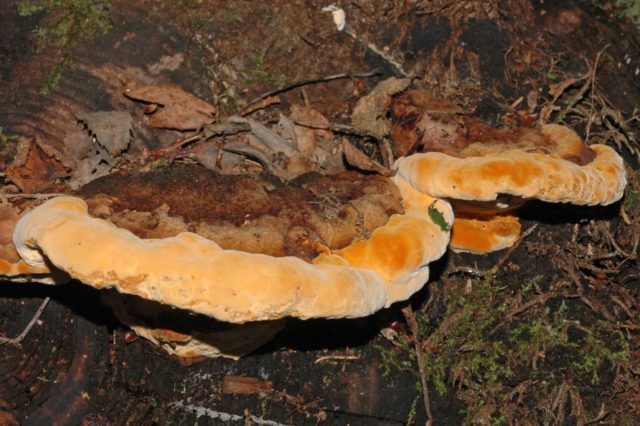
Gleophyllum odorous grows tightly to the substrate with a wide base
Where and how it grows
Gleophyllum odorous is a common species that grows everywhere. Since it is perennial, it can be seen at any time of the year. It prefers to grow on dead wood and old stumps of coniferous trees, mainly spruce. It can sometimes be seen on treated wood as well.
Main habitats:
- central part of Russia;
- Siberia;
- Ural;
- Far East;
- North America;
- Europe;
- Asia.
Doubles and their differences
Gleophyllum odorous in appearance is in many ways similar to other members of its family. But at the same time, each of them has certain differences.
- Log gleophyllum. The cap of this species is rough, its diameter does not exceed 8-10 cm. The color of the fruiting body is gray-brown, and subsequently becomes completely brown. The pulp is thin, leathery, odorless. Its shade is brownish-red. It settles on stumps and fallen trees of aspen, oak, elm, less often needles. It also causes the development of gray rot like gleophyllum odorous. Refers to inedible mushrooms. The official name is Gloeophyllum trabeum.
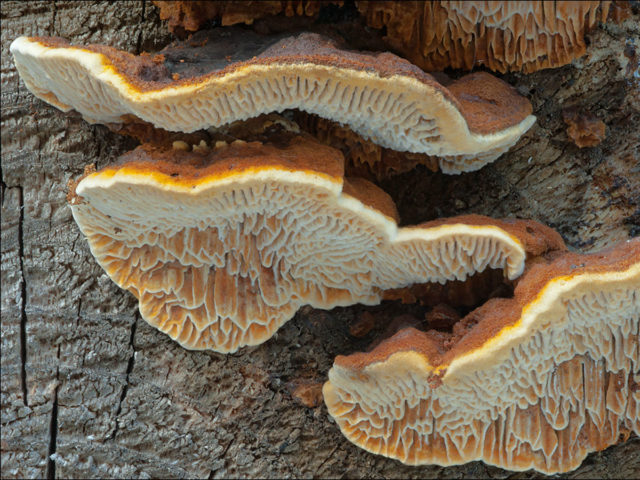
Log gleophyllum is found on all continents except Antarctica
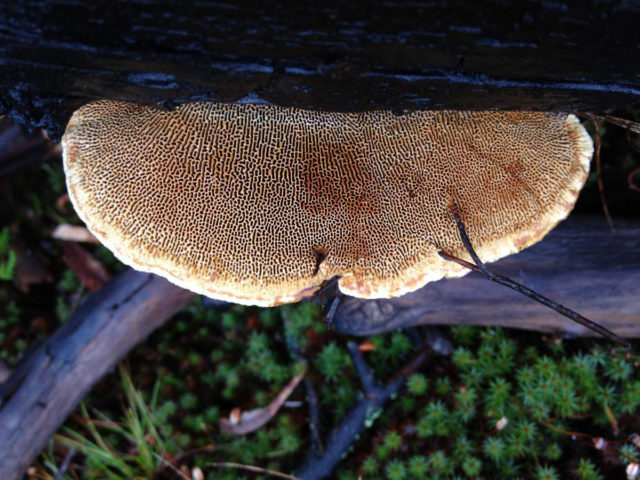
The cap of the oblong gleophyllum has the ability to bend well
Conclusion
Gleophyllum odorous is of no interest to mushroom pickers. However, its properties are carefully studied by mycologists. The position of this species has not yet been determined. Recent molecular studies have shown that the Gleophyllaceae family shares similarities with the genus Trametes.
Diseases of wood: white and brown rot
Brown or white rot? What it is and how the species differ in appearance, we will describe in more detail in the article below.
How to distinguish brown from white?
Wood-destroying fungi differ in the type of decay
There is one, but very important, difference between the two. During the "brown" lesion, first of all, light cellulose is destroyed, as a result of which a dark brown, flaky powdery lignin is formed.
A typical example is a piece of wood that has disintegrated into brownish cubes. A small test will help to find out more precisely - rub a piece of wood with your fingers (as shown in the picture below), you will have a brownish, fine dust in your hands. The situation is different with white fungus. Here, on the contrary, lignin decomposes; as a residue, we have fibrous, light or even almost white cellulose. Such wood cannot be ground into dust, it will remain fibrous.
External signs of brown rot
A typical “brownish” sign (along with cubing) is a dark brown color of the tree in the affected area. As mentioned above, this is the result of cellulosic degradation. During drying, the tree also dries out in the longitudinal direction of growth, which leads to the formation of cubes: first large, then small. At an early stage, it is quite difficult to determine the type of parasitic fungus - a barely infected tree only loses its strength over time, becoming dust.
There is a fairly large number of brown rot pathogens. From the inside, the following types can most often be found:
- Mushroom house, Serpula lacrymans
- Coniophora stinking, Coniophora puteana
- Vaillant fibroporia, Antrodia vaillantii
- Cep House, Antrodia sinuosa
- Oligoporus patty, Oligoporus placenta
- Antrodia, Antrodia xantha
- Chubby Pig, Paxillus panuoides
- Saw-leaf, Lentinus lepideus
- Leukogyrophana soft, Leucogyrophana mollusca
- Leukogyrophana powdery or small house mushroom, Leucogyrophana pulverulenta
On the outside of a wooden house, the following types often live:
- Oak Sponge, Daedalea quercina
- Fence mushroom, Gloeophyllum sepiarium
- Gleophyllum fir, Gloeophyllum abientinum
- Log gleophyllum, Gloeophyllum trabeum
- Serpula belt, Serpula himantioides
Brown rot can not always be seen by pathogens the first time. Below is an example of a fence mushroom that settled inside a support beam and destroyed it from the inside. At the same time, the outside of the tree retained a good, healthy look.
External signs of white rot
The end result of the "work" of white rot is the formation of a whitish-gray, soft and loose wood. The causative fungi destroy stem-forming plant cells. Unlike the brown scourge, the infected tree does not crumble into small pieces, since the fibers do not allow cuboid cracks to form.
As a rule, in residential buildings, the chance of meeting white rot is much less than brown just because the number of white pathogens is much less. Outside, it is also common. Errors often occur when determining the type of parasite. The reason for this is the double defeat. This happens when both types of rot peacefully coexist on one piece of wood.
White internal pathogens:
- White oak mushroom, Donkioporia expansa
- Star fungus, Asterostroma cervicolor
- Phlebiopsis giant, Phlebiopsis gigantea
- Fire sponge, Phellinus contiguus
- Gray polypore, Diplomitoporus lindbladii
- Domestic dung, Coprinus radians
- Bicolor resin mushroom, Resinicium bicolor
- Trichaptum fir, Trichaptum abietinum
- Scaly polypore, Polyporus squamosus
- Trametes multi-colored, Trametes versicolor
- Common nutcracker, Schizophyllum commune
- Polypore real, Fomes fomentarius
- False polypore, Phellinus igniarius
- Singed polypore, Bjerkandera adusta
Other types of tree fungus
red or fissured sound, motley honeycomb sound
A favorite habitat is coniferous wood, pathogens are pine sponge (Phellinus pini) and various types of phytophthora.
Marble is caused by real and false tinder fungi. Another special type of rot, which used to be found almost exclusively on telegraph poles - rotting, destroying cellulose in the cell membrane.
The causative agents are ascomycetes, moldy species, deuteromycetes (or imperfect fungi) and trichodermin.
Habitat and ecology [| code]
Gleophyllum is a cosmopolitan, more common in the temperate zone of the Northern Hemisphere.
Intake gleophyllum is a saprotroph that grows on stumps, dry and valez of conifers, usually in open places and forest glades. It rarely affects deciduous species (eg aspen). Causes brown rot, quickly penetrating into the substrate.
In confined spaces, where the fungus appears periodically, fruiting bodies are most often underdeveloped, sterile, coral-branched. The hymenophore in such fungi can be completely reduced or present in the form of irregular tubules without spores.

